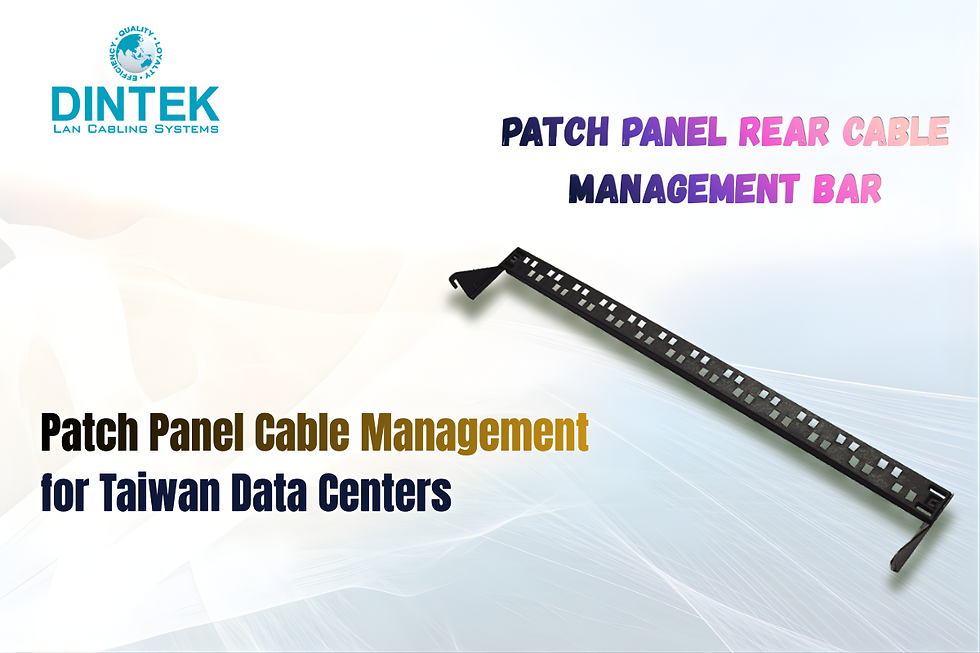A Comprehensive Guide to Choosing the Right Patch Cord & Assemblies for Your Setup
- dinteklancabling
- Nov 18, 2024
- 2 min read
For a reliable network infrastructure, choosing the right patch cord and assemblies is as important as selecting the backbone cabling. These seemingly small components play a critical role in ensuring network performance, durability, and scalability. Whether you're setting up an office network, data center, or industrial automation system, the right patch cords can make all the difference. Here’s a comprehensive guide to help you select the perfect patch cord and assemblies for your specific needs.

Understanding Patch Cords and Assemblies
Patch cords are short cables used to connect various network components like switches, routers, and patch panels to end devices. They’re typically categorized by performance standards (Cat5e, Cat6, Cat6A, Cat7, Cat8) and are available in copper or fiber optic versions. Assemblies refer to pre-terminated cable setups that include patch cords, connectors, and sometimes cable management solutions.
Key Factors to Consider
Application Needs
The first step is understanding your network’s application. For example, if you’re setting up a home office or small business, Cat5e or Cat6 patch cords might suffice for everyday tasks like internet browsing and video streaming. On the other hand, high-performance networks like data centers or industrial setups often require Cat6A, Cat7, or even Cat8 cables to handle high-speed data transfer and minimize interference.
Bandwidth and Speed Requirements
Network speed and bandwidth are critical. If your infrastructure supports speeds up to 1 Gbps, Cat5e patch cords are adequate. However, for future-proofing your setup or achieving speeds of 10 Gbps or more, Cat6A and higher are recommended. DINTEK’s high-performance patch cords, such as the Cat6A and Cat8 series, are ideal for ultra-fast networks demanding low latency.
Cable Shielding
Interference can significantly impact network performance, especially in environments with high electromagnetic interference (EMI). Shielded cables, such as Shielded Twisted Pair (STP) or Foiled Twisted Pair (FTP), protect against EMI and ensure consistent performance. Unshielded Twisted Pair (UTP) cables are suitable for environments with minimal interference.
Durability and Flexibility
The physical environment of the setup also matters. For industrial or outdoor environments, rugged patch cords with high resistance to temperature, moisture, and physical stress are crucial. For office setups, flexibility and ease of installation are top priorities. DINTEK offers patch cords with LSZH jackets, ensuring both safety and durability.

Connector Type and Compatibility
Ensure the connectors match your equipment. RJ45 connectors are standard for Ethernet cables, but fiber optic cables use LC, SC, or MPO connectors. DINTEK’s pre-terminated fiber optic assemblies simplify deployment and eliminate the guesswork.
Why Choose DINTEK Patch Cords?
DINTEK is a trusted name in networking solutions, offering a wide range of patch cords and assemblies designed for every need. Whether you need copper patch cords for office setups or fiber optic assemblies for high-speed networks, DINTEK provides products that are rigorously tested for quality and performance.
Conclusion
Choosing the right patch cords and assemblies is a vital step in ensuring your network's efficiency, reliability, and scalability. By understanding your network requirements and opting for high-quality solutions like those from DINTEK, you can build a robust and future-proof infrastructure. Ready to upgrade your network? Explore DINTEK range of premium patch cords and assemblies today.



Comments